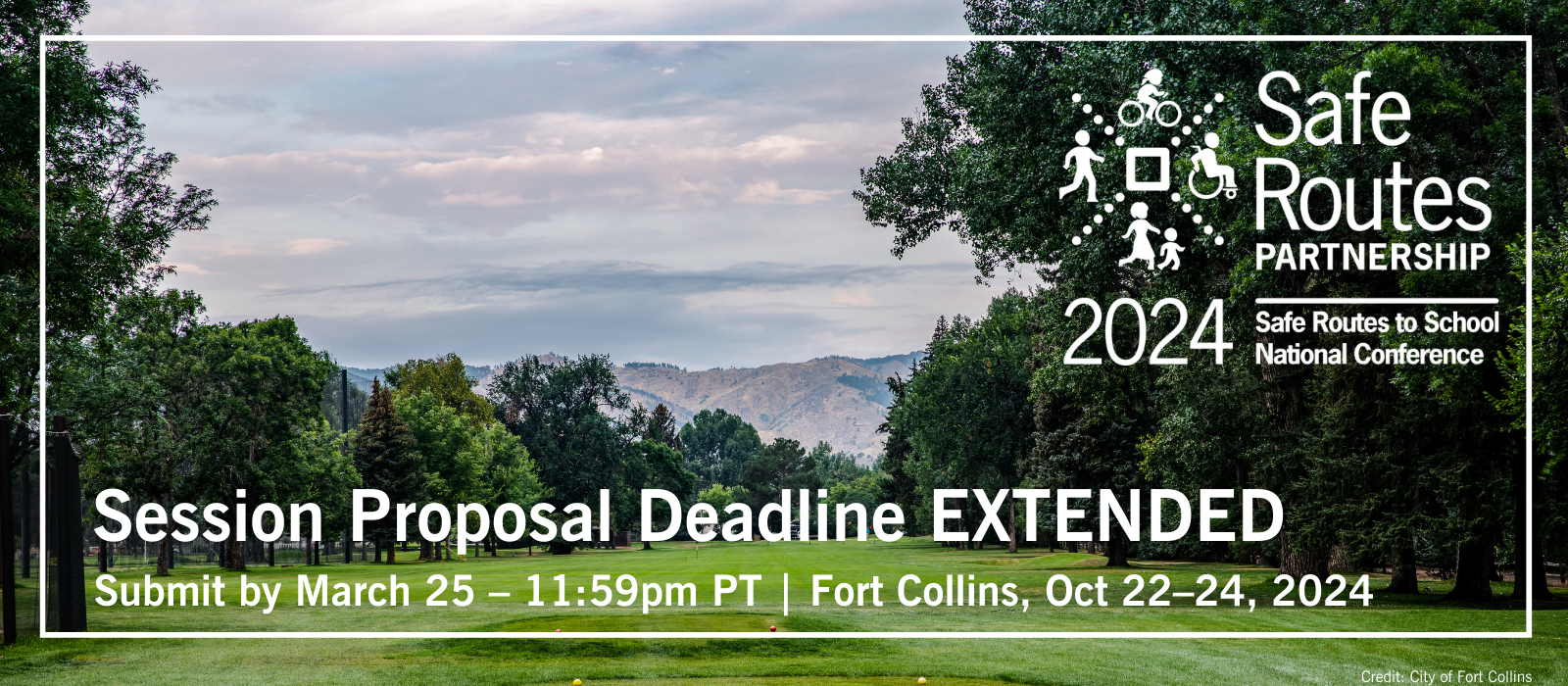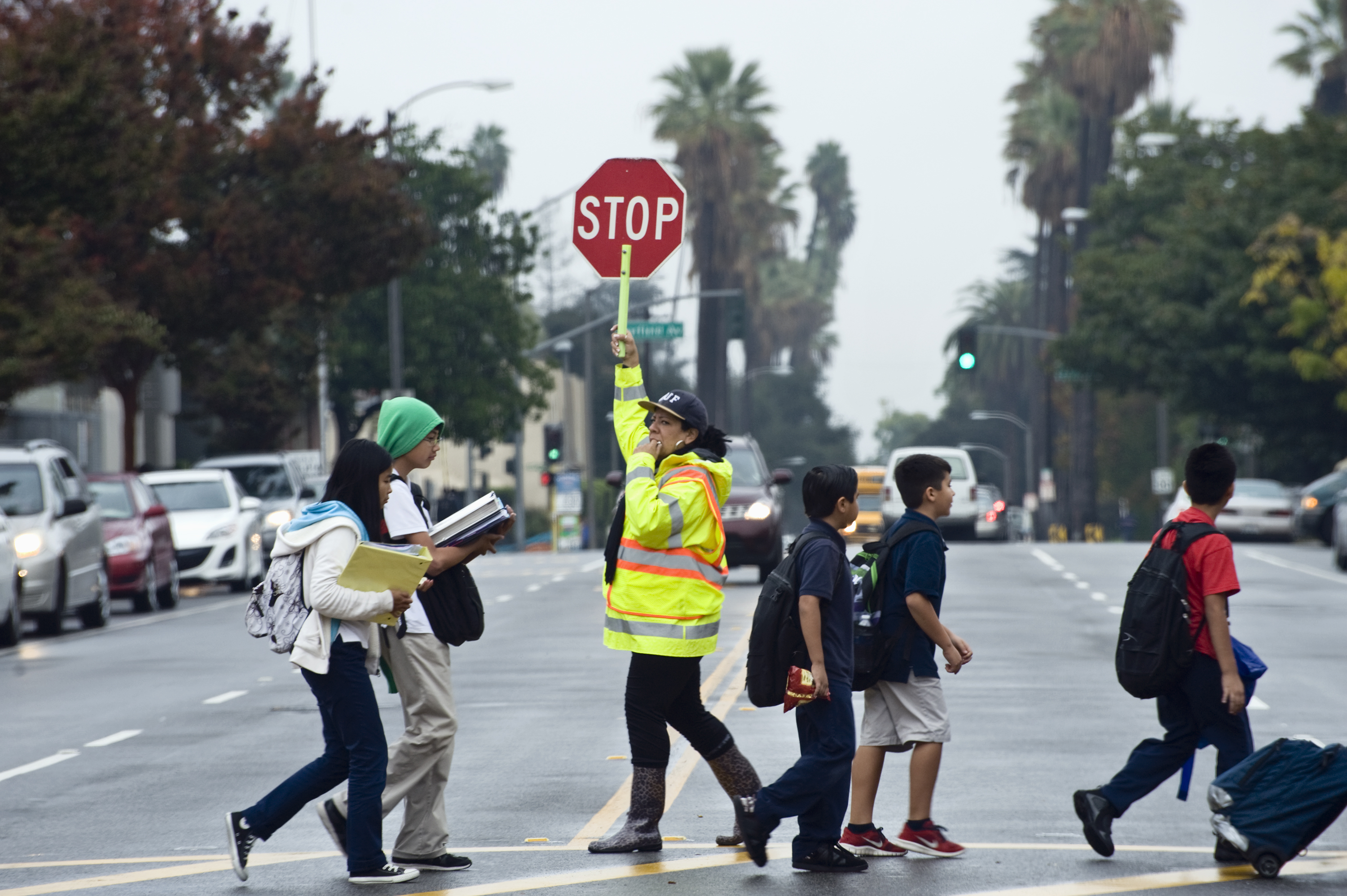
Now Accepting Session Proposals Until March 4, 2024
Session Proposal Deadline EXTENDED Until March 25, 2024 11:59pm PT
Resource Library
Key takeaways:
- The percentage of individuals participating in any active transportation for both adolescents and young adults was higher among males, Black and Hispanic racial and ethnic groups, and low-income participants.
- A higher percentage of low-income youth and youth of color participated in active transportation compared with white and high-income peers.
- Young adults and females were less likely to participate in any active transportation.
- This study may suggest that active transportation interventions may support healthy weight among youth, however, some variables may mitigate this effect. For example, youth from low-income families and youth of color were more likely to engage in active transportation but were also more likely to have higher body weights.
- Black adolescents were 10 percent more likely and Hispanic adolescents were 20 percent more likely to engage in active transportation compared to white adolescents.
- Although active transportation accounted for only 18 percent of physical activity for adolescents and 16 percent for young adults, this study suggests that active transportation can be leveraged to promote overall physical activity.
Key takeaway:
- Children who used active transportation to travel to school at a young age were more likely to continue to do so as they got older. Children who did not use active transportation to travel to school were not likely to take up the habit as they got older.
- For every one-tenth of a mile increase of distance from home to school a child’s likelihood of using active transportation to travel to school decreased by eight percent.
- Students within the study area who used active transportation to travel to school at a young age were more likely to continue to use active transportation despite an increase in distance from home to school as they got older.
- The likelihood of children using active transportation to school was almost twice as high if the parent perceived their neighborhood as safe compared to if it was perceived as unsafe.
Key takeaways:
- Children from families with lower incomes use active transportation to travel to school at higher rates than children from high-income families.
- Living farther away, at distances greater than ½ miles from school decreased the likelihood of walking and biking to school by 92 percent and from school by 89 percent.
- Attending a school with a high level of support for active transportation increases the chances of walking to school by 55 percent and from school by 48 percent.
- The likelihood of active transportation to travel to and from school was greater when children asked permission from their parents to walk or bike and parents perceived there was school support for active travel to school, such as a Safe Routes to School program in place.
- This study revealed that low-income individuals were more likely to use active transportation to travel to school. This travel behavior may reflect evidence of inequity, rather than choice, as families attending schools classified as low- or medium-income may have access to fewer resources, such as a dependable vehicle.
Key takeaways:
- From 2001 to 2017, weekly walking trips increased 35 percent and bicycle trips increased by 12 percent.
- Low-income, carless households make the highest number of trips per week using walking or biking compared to the other households (low-income with a car and high-income households).
- Low-income carless household are more likely to use walking and biking out of necessity and lack of other viable options.
- Individuals in low-income, carless households in suburban areas are associated with up to 14 percent more walking trips and 33 percent more biking trips compared to their counterparts in other areas. The greater use of active travel among people in low-income, carless households in low-density locations could be related to the lower availability of transit in many of these areas that would require people to walk or bike.
- In urban areas where walking or biking is more feasible to access a destination, individuals from high-income households utilize active transportation more than low-income car-owning households.
Key takeaways:
- Nearly one in four U.S. adults reported traffic as a barrier to walking where they live.
- Of the survey respondents who reported traffic as a barrier to walking, vehicle speed was identified as the leading safety concern for people walking regardless of geographical area.
- Of survey respondents who reported traffic as a barrier to walking, the most common solution to increase safety was improving sidewalks and separating the sidewalk from the road.
- There is a mismatch between what people report as preferred safety improvements and what current guidance on speed reduction for improved safety recommends. For example, while vehicle lane reduction is a common method for safety improvements related to speed, only 10 percent of participants chose this as a preferred safety improvement method.
- Compared to those who walk for leisure or activity, people who walk as a mode of transportation were more likely to report the volume and type of vehicles as a concern and to select safety strategies that slow down vehicles.
Key Takeaways:
- Nearly half of the parents surveyed report that their child walks through an area where cars are dropping off or picking up children to get to or from the school building.
- Over one-third of parents surveyed say drivers are not paying attention and worry that their child will be hurt near the car or bus drop-off area.
- Parents surveyed identified “drivers not paying attention” as the top school traffic safety risk, followed by speeding, parking in no-parking areas, and dropping off in the wrong location.
- An overwhelming majority of parents (94 percent) feel that school officials should act when parents do not follow traffic rules near the school, and two-thirds of parents support the school putting up cones, gates, or other treatments to better direct traffic flow.
Key Takeaways:
- The benefits of having regular Walking School Busses (WSB) are cumulative. With each additional WSB trip, kids were 23 percent more likely to arrive to school on time and 21 percent less likely to experience bullying.
- Forty-two percent of programs reported improvements in students’ classroom behavior.
- The most common barriers to walking school bus programs were recruiting and maintaining student participants and identifying and maintaining route leaders.
- Programs in low-income communities were less likely to be coordinated by a parent than programs in moderate- and high-income communities (3.2 percent vs 29.6 percent).
- Programs in low- and moderate-income communities were more likely to have external funding than those in high-income communities (71.4 percent vs 37 percent).
- Programs within the United States had fewer route leaders overall, but more route leaders from the school and school supports than programs outside the United States.
- Programs with more route leaders reached more students and were more likely to report sustainability than programs with fewer route leaders.
- Programs coordinated by parents and external organizations had a lower reach (total student participation) than those coordinated by school or district staff.
- Programs coordinated by parents as opposed to school staff had a slightly easier time recruiting route leaders and were more likely to have a higher number of walks per week.
- Programs were successful despite having a low level of support from school and without strong school involvement. They were also successful when the neighborhood and built environment conditions were not supportive of walking.
To Get More Kids Walking and Biking, Let’s Inspire, not Shame Communities into Action
State Funding Strategies Workgroup Meeting: The Environmental Legislator Perspective on Active Transportation in 2024
Wednesday, February 7th from 2pm-3pm ET
The Walk, Ride, and Roll Webinar Series is back for 2024! Join us as we explore creative partnerships that support safety and spark joy in Safe Routes programs. Whether you are looking for new outreach venues, evaluation experts, or fun ways to “shake up” your program, this webinar will show you how to find the right partner to fit your needs!
Featured Speakers:
- Kori Johnson, Program and Engagement Manager, Safe Routes Partnership
This webinar is part of the Walk, Ride, and Roll Webinar Series supported by General Motors and presented by the Safe Routes Partnership.
Even though it’s early January, it feels like Groundhog Day has come early. The third potential government shutdown in five months is looming (January 19th) because Congress has not passed a budget or long-term continuing resolution.
Postponed: January 25th at 3 PM Eastern via Zoom
A Community Power Map is a visual tool to help you identify individuals, organizations, or institutions that may influence the outcome of the positive changes to increase park access in your community. This resource was created to guide you in developing your own community power map to build connections and improve park access.
Multimodal trails are off-road routes that can be used for walking and biking. This factsheet outlines ways that states advance equity goals through their multimodal trail programs: typically by defining high-need communities and then prioritizing them in project selection and funding.
November marked two years since the passage of the Bipartisan Infrastructure Law (BIL), and when it comes to how states are implementing the Transportation Alternatives Program (TAP), there is a lot to celebrate! Let’s look back at some of the biggest changes to the program in the Bipartisan Infrastructure Law and how they impacted states’ implementation of TAP.
This tool was developed to support people who are interested in a simple, structured approach to identifying the environmental and mobility-related characteristics of a
place, recording this information, and using this data to inform next steps. This tool was designed to support people who are experts of the place where they live, work,
or play.
We are entering that time of year when our lives get busy. We partake in holiday feasts and plan to connect with loved ones. In the whirlwind of these preparations, I was reminded of the importance of hitting the pause button by a very curious five-year-old whose favorite question is “why?” As I made my grocery lists and mapped out my trips to the various grocery stores, my son asked, “Why do we celebrate Thanksgiving?” A straightforward response is that we use this holiday to give thanks and gratitude.
This guide offers strategies for repealing traffic laws related to walking and biking that are racially enforced for advocates and organizations considering starting policy campaigns.


